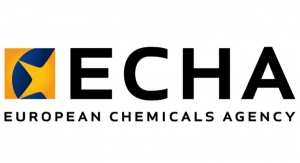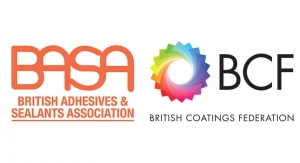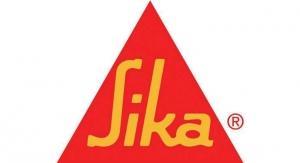Sean Milmo, European Correspondent05.04.18
The coatings supply chain in Europe has been staging a last minute offensive to block the official classification of titanium dioxide as a suspected carcinogen which will require health warning labels to be put on paint containers.
The most that can likely be achieved is a delay to the introduction of the classification. But coatings and TiO2 producers have been vowing to continue the battle, possibly by taking legal action. Even industrial mineral suppliers are joining the combat because they fear that once TiO2 is classed as being hazardous their products will soon be as well.
The focus of the pro-TiO2 campaigners has been on a committee of regulators from the European Union’s 28 member states which advises the European Commission, the EU’s Brussels-based executive, on final decisions under the Union’s Classification, Labelling and Packaging (CLP) regulation.
Coatings, TiO2 and other producer associations have been opposing at the EU and national levels a recommendation by the European Chemicals Agency, Helsinki, responsible for administering the CLP regulation, that TiO2 be categorized as being a suspected cause of cancer (category 2) through the inhalation of titanium dioxide dust.
The objective of the CLP regulation, which is based on the United Nations’ Globally Harmonised System (GHS) on categorizing chemicals, is to protect health and the environment as well as the free movement of substances by giving them a harmonized classification across the EU. Companies have to label their products on the basis of the classification which is concerned with hazard rather than exposure to risk.
Normally ECHA’s recommendations on CLP classifications are endorsed relatively quickly by the European Commission after consulting the advisory group of member state regulators, called CARACAL.
At the first CARACAL meeting to discuss the TiO2 classification last November a number of member states raised questions about its scope and whether there could be labelling exemptions for paints and inks.
A decision was postponed until the next meeting of the group in March where member states still insisted they needed more time to deliberate on the issue. So a sub-committee was set up to deal with the TiO2 classification in greater depth starting at a meeting in April.
“The doubts being expressed by member states demonstrated the success of our advocacy activities across Europe on the issue,” said Didier Leroy, technical director at the European Council of the Paint, Printing Ink and Artists Colours Industry (CEPE), Europe’s coatings trade association. “We’ve made them aware that there is a problem with the CLP classification of TiO2. They understand the consequences if the Commission goes ahead with its implementation. So many questions are being asked that more than one meeting of the special sub-committee will be needed.”
CEPE, Titanium Dioxide Manufacturers Association (TDMA) and other industry organizations have criticized the conclusions of a study of TiO2 by scientific experts on ECHA’s risk assessment committee (RAC) on which the CLP classification has been based.
RAC’s analysis showed that there is “no robust” carcinogenicity studies on TiO2 in species other than rats, the TDMA points out. Also the data on the effects of TiO2 dust on rats was generated under conditions of what would be lung “overload” for humans, it claims.
Furthermore, the TDMA said, the carcinogenicity profile of TiO2 is not substance specific but is common to similar substances with what is called poor soluble low toxicity profiles (PSLTs). These include quartz, carbon black, coal dust, diesel soot, talc and other silicates.
The TDMA has also published a socio-economic analysis, which has been dismissed by environmental NGOs as being irrelevant because the CLP classification was concerned only with health and environmental hazards. The analysis concluded that the classification would impact a wide range of industrial sectors including in addition to coatings, paper, plastics, cosmetics and automotive.
It would affects the jobs of millions of workers in Europe and beyond, having “highly disproportionate (adverse socio-economic impacts) as the recommended classification is not expected to enhance any human health benefits or further protect workers or consumers.”
A survey commissioned by the UK-based retailer Kingfisher plc which runs home improvement and DIY stores across Europe has demonstrated the danger to coatings sales of the TiO2 classification.
When 2,000 consumers in the UK were showed a wall-paint container with a category 2 carcinogen warning on the label as would be required by the TiO2 classification, 76 percent thought the product poses a risk of cancer to them if they breathe it in.
Just over half were less likely to buy wall paint after reading the label. Around a third said it would not make any difference to the likelihood of their buying wall paint but this was only because they would not have any other choice.
The March meeting of CARACAL revealed that a growing proportion of member states had become sceptical about the classification. A number wanted it to be extended to cover PSLTs although this would require extensive studies of other substances. According to a European Commission summary of the meeting, it was suggested that the whole issue of classification of PSLTs should be referred to the United Nations for consideration at the GHS level.
Some EU countries wanted to postpone a final decision until the completion of a current in-depth evaluation of the health and environmental risks of TiO2 under the auspices of ECHA. This may not be concluded for five years.
The most significant doubts among member states about the classification related to its legal implication. Some thought it was not an issue for CLP since TiO2 dust was a workplace hazard already covered by occupational health regulations.
Germany, which was the most critical among the member states of the classification, warned that if could have “severe” and “unnecessary” legal consequences.
If the European Commission presses ahead with the enforcement of the classification , industry could exploit legal anomalies in the measure by taking court action, possibly in the EU’s European Court of Justice (ECJ). One consistency is that while the CLP regulation covers only chemical effects, the studies on TiO2 shows that its particles can possibly have only a hazardous physical effect on human organisms..
“We don’t yet have plans for legal action but we are evaluating all possibilities,” said Leroy. “We will fight this battle all the way.”
The most that can likely be achieved is a delay to the introduction of the classification. But coatings and TiO2 producers have been vowing to continue the battle, possibly by taking legal action. Even industrial mineral suppliers are joining the combat because they fear that once TiO2 is classed as being hazardous their products will soon be as well.
The focus of the pro-TiO2 campaigners has been on a committee of regulators from the European Union’s 28 member states which advises the European Commission, the EU’s Brussels-based executive, on final decisions under the Union’s Classification, Labelling and Packaging (CLP) regulation.
Coatings, TiO2 and other producer associations have been opposing at the EU and national levels a recommendation by the European Chemicals Agency, Helsinki, responsible for administering the CLP regulation, that TiO2 be categorized as being a suspected cause of cancer (category 2) through the inhalation of titanium dioxide dust.
The objective of the CLP regulation, which is based on the United Nations’ Globally Harmonised System (GHS) on categorizing chemicals, is to protect health and the environment as well as the free movement of substances by giving them a harmonized classification across the EU. Companies have to label their products on the basis of the classification which is concerned with hazard rather than exposure to risk.
Normally ECHA’s recommendations on CLP classifications are endorsed relatively quickly by the European Commission after consulting the advisory group of member state regulators, called CARACAL.
At the first CARACAL meeting to discuss the TiO2 classification last November a number of member states raised questions about its scope and whether there could be labelling exemptions for paints and inks.
A decision was postponed until the next meeting of the group in March where member states still insisted they needed more time to deliberate on the issue. So a sub-committee was set up to deal with the TiO2 classification in greater depth starting at a meeting in April.
“The doubts being expressed by member states demonstrated the success of our advocacy activities across Europe on the issue,” said Didier Leroy, technical director at the European Council of the Paint, Printing Ink and Artists Colours Industry (CEPE), Europe’s coatings trade association. “We’ve made them aware that there is a problem with the CLP classification of TiO2. They understand the consequences if the Commission goes ahead with its implementation. So many questions are being asked that more than one meeting of the special sub-committee will be needed.”
CEPE, Titanium Dioxide Manufacturers Association (TDMA) and other industry organizations have criticized the conclusions of a study of TiO2 by scientific experts on ECHA’s risk assessment committee (RAC) on which the CLP classification has been based.
RAC’s analysis showed that there is “no robust” carcinogenicity studies on TiO2 in species other than rats, the TDMA points out. Also the data on the effects of TiO2 dust on rats was generated under conditions of what would be lung “overload” for humans, it claims.
Furthermore, the TDMA said, the carcinogenicity profile of TiO2 is not substance specific but is common to similar substances with what is called poor soluble low toxicity profiles (PSLTs). These include quartz, carbon black, coal dust, diesel soot, talc and other silicates.
The TDMA has also published a socio-economic analysis, which has been dismissed by environmental NGOs as being irrelevant because the CLP classification was concerned only with health and environmental hazards. The analysis concluded that the classification would impact a wide range of industrial sectors including in addition to coatings, paper, plastics, cosmetics and automotive.
It would affects the jobs of millions of workers in Europe and beyond, having “highly disproportionate (adverse socio-economic impacts) as the recommended classification is not expected to enhance any human health benefits or further protect workers or consumers.”
A survey commissioned by the UK-based retailer Kingfisher plc which runs home improvement and DIY stores across Europe has demonstrated the danger to coatings sales of the TiO2 classification.
When 2,000 consumers in the UK were showed a wall-paint container with a category 2 carcinogen warning on the label as would be required by the TiO2 classification, 76 percent thought the product poses a risk of cancer to them if they breathe it in.
Just over half were less likely to buy wall paint after reading the label. Around a third said it would not make any difference to the likelihood of their buying wall paint but this was only because they would not have any other choice.
The March meeting of CARACAL revealed that a growing proportion of member states had become sceptical about the classification. A number wanted it to be extended to cover PSLTs although this would require extensive studies of other substances. According to a European Commission summary of the meeting, it was suggested that the whole issue of classification of PSLTs should be referred to the United Nations for consideration at the GHS level.
Some EU countries wanted to postpone a final decision until the completion of a current in-depth evaluation of the health and environmental risks of TiO2 under the auspices of ECHA. This may not be concluded for five years.
The most significant doubts among member states about the classification related to its legal implication. Some thought it was not an issue for CLP since TiO2 dust was a workplace hazard already covered by occupational health regulations.
Germany, which was the most critical among the member states of the classification, warned that if could have “severe” and “unnecessary” legal consequences.
If the European Commission presses ahead with the enforcement of the classification , industry could exploit legal anomalies in the measure by taking court action, possibly in the EU’s European Court of Justice (ECJ). One consistency is that while the CLP regulation covers only chemical effects, the studies on TiO2 shows that its particles can possibly have only a hazardous physical effect on human organisms..
“We don’t yet have plans for legal action but we are evaluating all possibilities,” said Leroy. “We will fight this battle all the way.”
























